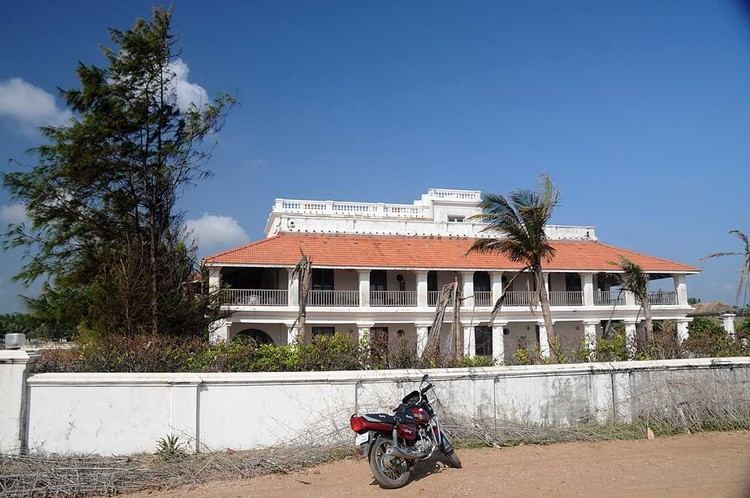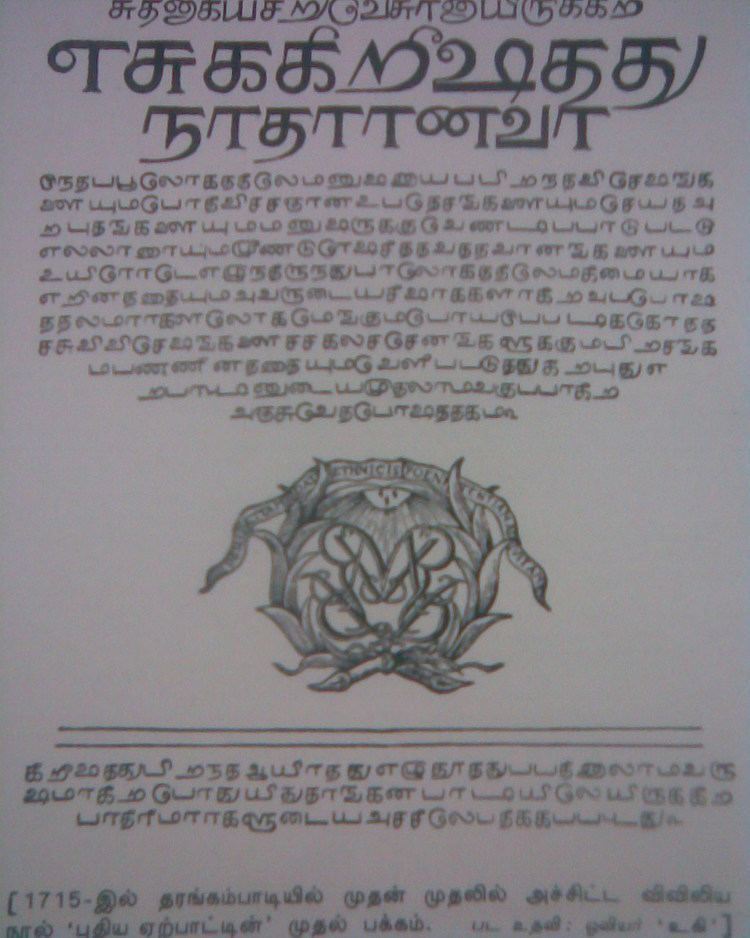Language spoken | ||
 | ||
Map of Tharangambadi
Tharangambadi, formerly Tranquebar, is a town in the Nagapattinam district of the Indian state of Tamil Nadu. It lies 15 kilometres (9.3 mi) north of Karaikal, near the mouth of a distributary of the Kaveri River. Tharangambadi is the headquarters of Tharangambadi taluk while its name means "place of the singing waves". It was a Danish colony from 1620 to 1845, and in Danish it is still known as Trankebar.
Contents
- Map of Tharangambadi
- Rich history of tharangambadi and the remnants of danish influence
- Tranquebar tharangambadi fort beach
- History
- Danish Museum
- New Jerusalem Church
- Danish Fort
- Demographics
- References

Rich history of tharangambadi and the remnants of danish influence
Tranquebar tharangambadi fort beach
History
The place dates back to 14th century. Masilamani nathar (Shiva) temple was built in 1306, in a land given by Maravarman Kulasekara Pandyan I. As of now, this temple is the oldest monument. Until 1620, when the Danes came, the place was under Thanjavur Nayak kingdom. Danish admiral Ove Gjedde felt the place would be a potential trading centre, made a deal with Raghunatha Nayak and built a fort, which is known Fort Dansborg.
A Jesuit Catholic congregation in Tranquebar predated the arrival of the Danes by several decades. This congregation descended from Keralan fisherman converted by Portuguese missionaries from Goa. There was also a sizable population of Indo-Portuguese due to their presence nearby in Nagapattinam. The Catholic church was probably demolished to build the fort. This fort was the residence and headquarters of the governor and other officials for about 150 years. It is now a museum hosting a collection of artefacts from the colonial era.
Among the first Protestant missionaries to set foot in India were two Lutherans from Germany, Bartholomäus Ziegenbalg and Heinrich Pluetschau, who began work in 1705 in the Danish settlement of Tranquebar. Ziegenbalg translated the Old and New Testaments into Tamil, imported a printing press, and printed the New Testament in Tamil in 1714.
The local people were forced to learn the broken Portuguese that was the lingua franca between Indians and Europeans at the time, and later on translated the Bible into the local Tamil language. They also established a printing press, which within a hundred years of its establishment in 1712 had printed 300 books in Tamil. At first they only made little progress in their religious efforts, but gradually the mission spread to Madras, Cuddalore and Tanjore. Today Bishop of Tranquebar is the official title of a bishop in the Tamil Evangelical Lutheran Church (TELC) in South India which was founded in 1919 as a result of the German Lutheran Leipzig Mission and Church of Sweden Mission. The seat of the Bishop, the Cathedral and its Church House ("Tranquebar House") is in Tiruchirappalli.
The Zion church was consecrated in 1701, which is the oldest Protestant church in India. In 1718, The New Jerusalem Church was constructed. Moravian Brethren missionaries from Herrnhut, Saxony established the Brethren's Garden at Porayar near Tranquebar and operated it as a missionary centre for a number of years. An Italian Catholic Father Constanzo Beschi, who worked in the colony from 1711 to 1740, found himself in conflict with the Lutheran pioneers at Tranquebar, against whom he wrote several polemical works.
Tranquebar was occupied by the British in February 1808 during the Napoleonic Wars but was restored to Denmark following the Treaty of Kiel in 1814 and The Norwegian Declaration of Independence. Along with the Danish settlement of Serampore in Bengal, it was sold to the British in 1845. Tranquebar was then still a busy port, but it later lost its importance after a railway was opened to Nagapattinam.
The Subrahmanya Temple, Perambur, located in the outskirts of the town is one of the most prominent Murugan temples in the region.
Danish Museum
The antiquities connected with the colonial period and Danish settlement at Tharangampadi are exhibited. The museum contains porcelain ware, Danish manuscripts, glass objects, Chinese tea jars, steatitle lamps, decorated terracotta objects, figurines, lamps, stones, sculptures, swords, daggers, spears, sudai (stucco) figurines and wooden objects. There is also part of a whale skeleton,a giant sawfish rostrum and small cannonballs.
New Jerusalem Church
The New Jerusalem Church [1] was built in 1718 by the Royal Danish missionary Bartholomaeus Ziegenbalg in the coastal town of Tranquebar, India which was at that time a Danish India Colony. The church is located on King Street, and church services are conducted every Sunday. The church, along with other buildings of the Tranquebar Mission was damaged during the tsunami of 2004, and were renovated at a cost of INR 7 million, and re-consecrated in 2006.
Danish Fort
Construction of Fort Dansborg started in 1620. Many parts of the fort have been reconstructed several times. Dansborg is the second largest Danish fort ever constructed, with Kronborg being the largest. The rampart wall is a fairly large four sided structure, with bastions at each cardinal point. A single storied building was constructed along three inner sides of the rampart, with barracks, warehouse, kitchen and jail. The rooms on the southern side remain in good condition, but the rooms on the western and northern sides have been substantially damaged. On the eastern side of the fort, there was a two storied building facing the sea. It was the main building of the fort. The vaulted lower storey served as a magazine and a warehouse, while the vaulted upper storey contained the church and the lodging of the governor, the senior merchants and the chaplain. The sea on the eastern and western side protected the fort. The fort was surrounded by a moat, access to the fort being over a drawbridge. The moat has completely disappeared.
Demographics
As of 2001 India census, Tharangambadi had a population of 20,841. Males constitute 48% of the population and females 52%. Tharangambadi has an average literacy rate of 74%, higher than the national average of 59.5%: male literacy is 79%, and female literacy is 69%. In Tharangambadi, 10% of the population is under 6 years of age.
